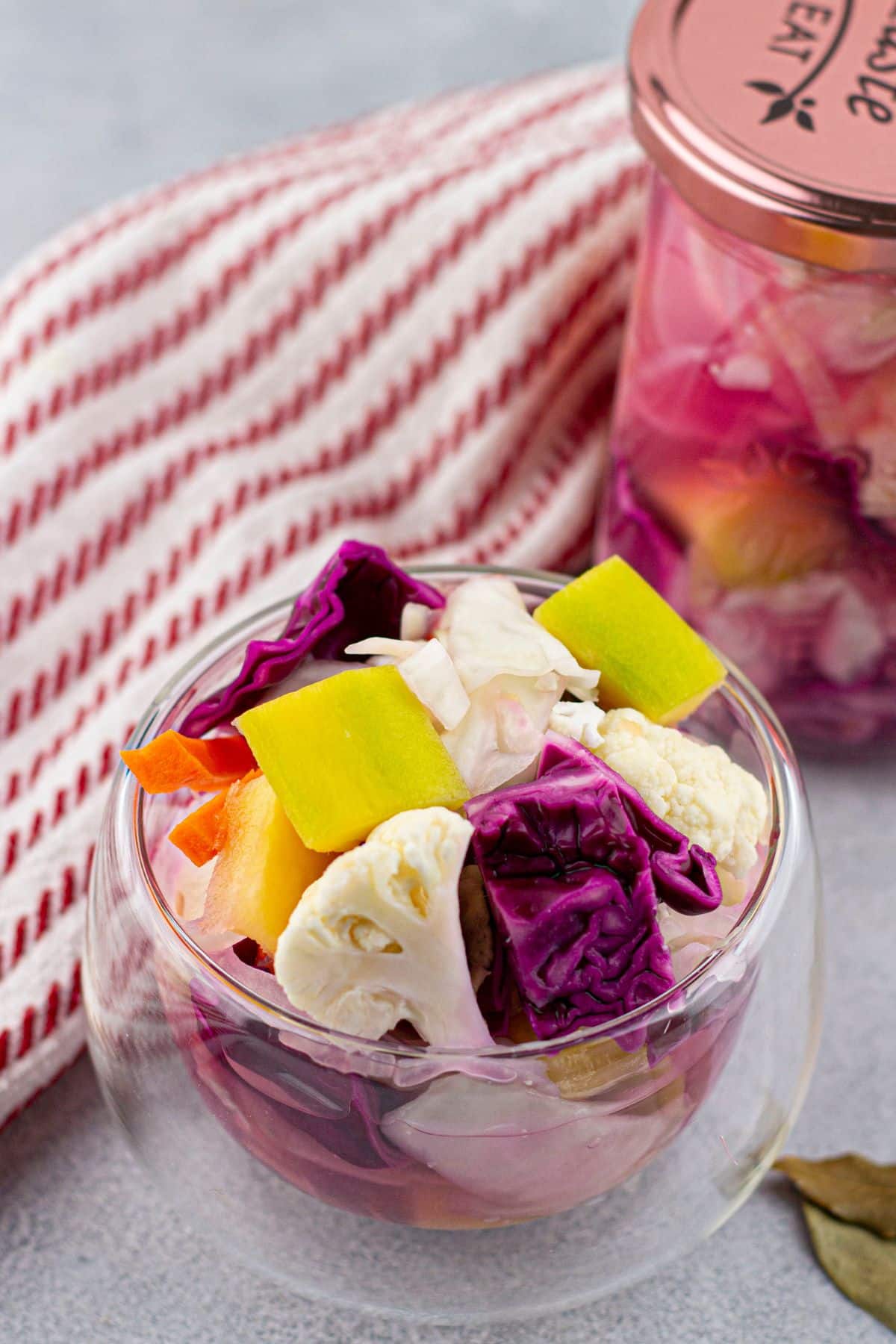Mixed Pickled Vegetables are a popular side dish in many cultures around the world. Often enjoyed as an appetizer on a charcuterie board, antipasto platter or accompaniment to a main course, these pickled vegetables offer a unique combination of flavors and textures that can elevate any meal.

One of the key aspects of mixed pickled vegetables is the variety of vegetables used. This can include fresh produce such as carrots, cucumbers, radishes, bell peppers, cauliflower, green beans and more. The different colors and shapes of these vegetables not only make for a visually appealing dish but also provide a range of tastes and textures when combined together.
The process of pickling involves preserving food by immersing it in an acidic solution such as vinegar or brine. This not only helps to extend the shelf life of the vegetables but also infuses them with a tangy and slightly sour flavor. The longer the vegetables are left to pickle, the stronger and more developed their flavors become.
Aside from being delicious, mixed pickled vegetables also offer several health benefits. They are low in calories and fat, making them a great addition to any diet. I love to make a salad with Tuna and add my pickling liquid as my dressing. This is a simple recipe with minimal effort and a great way to get the kiddos to eat different types of vegetables. I eat this pickled mixed vegetable in small batches, so I am careful not to have too many carbs. It really is a perfect addition to any meal.
Jump to:
Ingredients
Here is a quick look at what you will need. You can find the full measurements in the recipe card below.

- Squash
- Cauliflower
- Red cabbage
- Apple cider vinegar or Filtered Water
- Ginger
- Garlic
- Onion
- Carrots
- bay leaves
- Salt and Black pepper
See recipe card for quantities.
Instructions
This is a quick overview of the steps. See the Recipe card below for the rest.

Add chopped red cabbage, Squash, and carrots in a cup.

Add onion, ginger, and cauliflower.

Add garlic, bay leaf, salt, and black pepper

Sterilize the jar. Fill the jar with your fresh veggies.

Add vinegar or filtered cold water if you do not use vinegar, and allow the air bubbles to release. This will be a fermentation process that lasts from 5 days. If you use vinegar, vegetables can be served within a few hours for quick pickled vegetables or wait until the next day for best results.
Variations and Substitutions
- Additional Vegetables- Feel free to add any fresh vegetables you love such as Red bell pepper if you are going for the giardiniera recipe. Just make sure to chop the larger pieces into smaller pieces so they can ferment properly.
- Spices- You can also play around with different spices such as mustard seeds, dill seed, coriander seeds, or paprika for added flavor.
- Spicey- If you like a bit of a kick like I do, you can add hot peppers or serrano peppers.
- Vinager - If Apple Cider Vinegar is not your thing, you can always use red wine vinegar or white wine vinegar
Equipment
- quart jars or Pint jars
- Bowl

Storage
Storage: Once your vegetables have finished fermenting, you can store them in the refrigerator for up to a month. Make sure they are fully submerged in the brine to keep them fresh.
Canning- If you want to store your fermented vegetables for longer storage, you can also use the canning method. This involves sealing the jars and processing them in a hot water bath canner to create an airtight seal if you do home canning.
Pro Tips
- Use organic vegetables for the best quality and flavor
- Make sure to properly sterilize your jars before use
- If you see any mold or odd discoloration, discard the entire batch as it may be spoiled
FAQ
Some low carb options for pickling include cucumbers, radishes, cabbage, and cauliflower.
No, it is recommended to use pickling or kosher salt as they are free of additives that can affect the flavor and texture of your pickled vegetables.
Yes, it is important to store your homemade pickles in the refrigerator to prevent them from spoiling. They will keep for up to a few months when stored properly.
Answer: Yes, you can make your own pickles at home using a simple vinegar brine solution. It is a fun and easy way to preserve fresh produce and customize the flavors to your liking.
Recipe Card

Mixed Pickled Vegetables
Equipment
- quart jars or Pint jars
- Bowl
Ingredients
- ½ cup Squash
- ½ Cup Cauliflower
- ½ Cup Red cabbage
- 2 tbsp. Apple cider vinegar or Filtered Water
- 3 tbsp. Ginger
- 1 tbsp. Garlic
- ½ cup Onion
- ½ cup Carrots
- 2 bay leaves
- Salt and Black pepper
Instructions
- Add chopped red cabbage, Squash, and carrots in a cup.
- Add onion, ginger, and cauliflower.
- Add garlic, bay leaf, salt, black pepper, and vinegar if using.
- Sterilize the jar. Fill the jar with your fresh veggies.
- Add vineger or filtered cold water if you do not use vinegar, and allow the air bubbles to release. This will be a fermentation process that lasts from 5 days. If you use vinegar, vegetables can be served within a few hours for quick pickled vegetables or wait until the next day for best results.
Disclaimer:
Any nutritional data I provide is an approximation and actual dietary information can vary based on ingredients and proportion sizes.





Leave a Reply